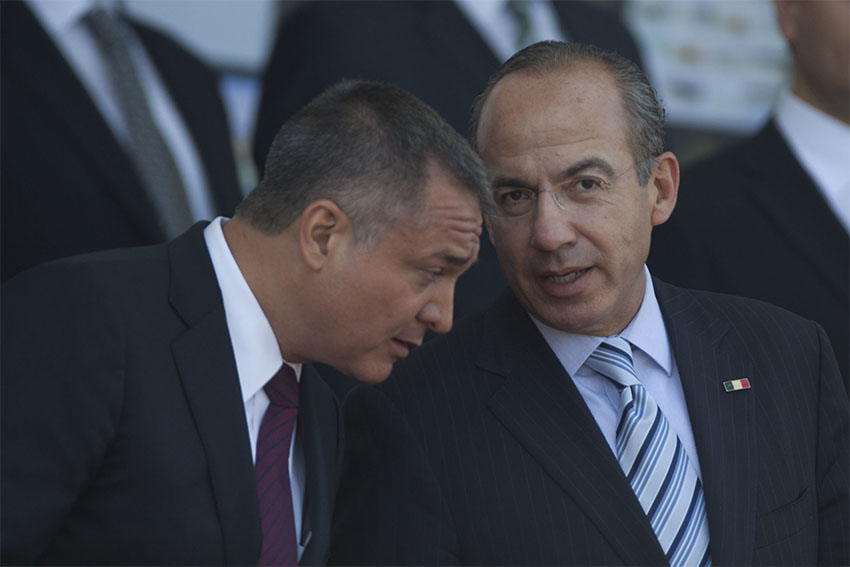Prosecutors in the United States have gathered more evidence against Genaro García Luna, a former federal security minister who was arrested in Texas in 2019 on charges he colluded with the Sinaloa Cartel.
García Luna — security minister in the 2006-12 government led by former president Felipe Calderón and director of the now-defunct Federal Investigation Agency before that — used shell companies to ship drugs to the United States, U.S. Department of Justice (DOJ) prosecutors allege. They also allege that the ex-security official was involved in the trafficking of drugs that were seized in New York just after he was detained in Dallas in December 2019.
The allegations are detailed in a letter sent to García Luna’s lawyer and in a submission to a United States federal court in Brooklyn, New York, where the accused is scheduled to go on trial in January.
The newspaper Milenio obtained a copy of the DOJ letter sent to lawyer César de Castro in which prosecutors said they have “records related to the shipment of narcotics into the United States through shell companies.”

The prosecutors said they have other evidence against García Luna including pay stubs from his time as a government official and “records related to a co-conspirator and the seizure of narcotics in Queens, New York, on December 18, 2019.”
The pay stubs could be used to show that García Luna’s significant wealth was not the product of his public service.
The prosecutors also said that six cell phones have been seized from co-conspirators of the former security minister and that a Drug Enforcement Administration digital forensic investigator will present related testimony in court.
All told, the DOJ has submitted over 1 million pages of documents detailing evidence against García Luna to the Brooklyn court as well as thousands of photos and financial records and hundreds of video tapes.
The ex-security minister and two former high-ranking officials who worked under him are accused by U.S. authorities of allowing the Sinaloa Cartel to operate with impunity in Mexico in exchange for multimillion-dollar bribes.
Negotiations between prosecutors and the defense with a view to García Luna pleading guilty to trafficking and cartel collusion charges and cooperating with prosecutors in exchange for a more lenient sentence are ongoing.
If he maintains his innocence but is found guilty he faces a prison sentence of between 10 years and life. Mexico’s federal government is attempting to recover allegedly ill-gotten assets owned by García Luna in the U.S., filing a US $250 million civil claim in 2020.
President López Obrador has claimed that the charges faced by the former security minister prove that Mexico was a “narco-state” during the presidency of Calderón, who narrowly defeated AMLO at the 2006 election. Calderón categorically rejected the claim and has asserted he had no knowledge that his security minister was involved in criminal dealings with the Sinaloa Cartel, which was formerly led by convicted drug lord Joaquín “El Chapo” Guzmán.
